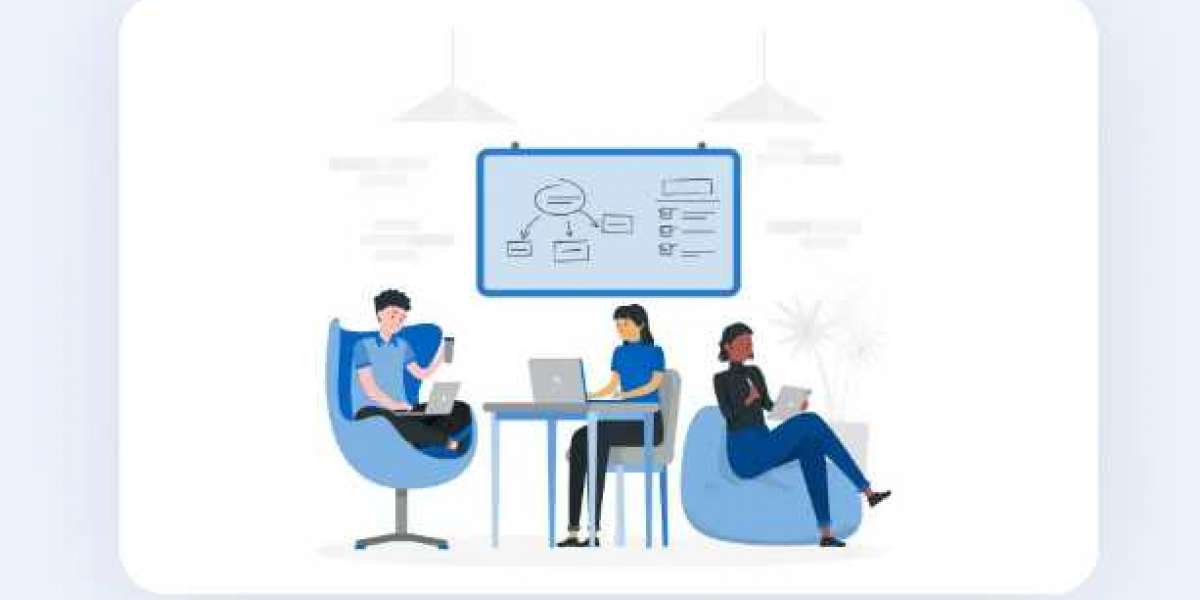In the fast-paced world of software development, choosing the right methodology is crucial for project success. Offshore software development has become an attractive solution for companies seeking cost-effective ways to build high-quality software. Among the different development methodologies, Agile and Traditional (Waterfall) are the most commonly debated approaches. Understanding how these methodologies compare in the context of offshore projects can help organizations make informed decisions when outsourcing software development.
In this article, we will explore the key differences between Agile and Traditional development, specifically in the context of offshore software development. We will analyze their strengths and weaknesses, provide insights on how each methodology works, and discuss which one is better suited for offshore projects.
What is Agile Development?
Agile development is an iterative and flexible methodology that emphasizes collaboration, adaptability, and customer feedback. Unlike traditional approaches that follow a rigid set of stages, Agile focuses on small, incremental deliveries of working software, which are then improved upon based on user feedback and changing requirements.
Agile development has gained immense popularity in offshore software development due to its adaptability and efficiency in managing complex projects. The methodology is typically executed in short development cycles called sprints, where teams focus on delivering specific features or functionality within a set timeframe.
Key Features of Agile:
- Iterative Process: Agile works in short, iterative cycles called sprints. Each sprint delivers a small, functional portion of the final product.
- Collaboration: Agile promotes close collaboration between the development team, business stakeholders, and customers.
- Customer-Centric: Agile teams focus on delivering customer value at the end of each sprint.
- Flexibility: Agile allows changes to be made at any stage of the project based on new requirements or customer feedback.
- Continuous Improvement: Agile encourages regular retrospectives to assess progress and improve the development process.
Benefits of Agile in Offshore Projects:
- Faster Time-to-Market: Agile’s iterative nature allows teams to deliver working software early and continuously, which is especially valuable for offshore projects where time zone differences may cause delays in communication.
- Increased Flexibility: Offshore teams can quickly adapt to changing requirements or feedback from the client, making Agile a great fit for projects where specifications may evolve over time.
- Improved Communication: Agile emphasizes collaboration and frequent communication between all stakeholders. This is particularly important in offshore projects, where teams may be spread across different time zones.
- Higher Customer Satisfaction: Agile’s focus on customer feedback and incremental delivery ensures that the end product meets the client’s needs and expectations.
What is Traditional (Waterfall) Development?
Traditional development, often referred to as Waterfall, is a linear and sequential methodology. In this approach, each phase of the development process is completed before moving on to the next one. The stages typically include requirements gathering, design, development, testing, deployment, and maintenance.
Waterfall has been the standard development model for many years and is still widely used in various industries, especially for projects with well-defined and stable requirements. However, it has some inherent limitations, particularly when it comes to handling changes during the development process.
Key Features of Traditional Development:
- Linear Process: Waterfall follows a sequential flow where each phase is completed before moving on to the next.
- Defined Requirements: The requirements are typically gathered upfront and are expected to remain stable throughout the project.
- Limited Flexibility: Once a phase is completed, making changes to the project becomes difficult and costly.
- Heavy Documentation: Waterfall projects rely heavily on documentation at each phase, which can sometimes slow down the development process.
Benefits of Traditional Development in Offshore Projects:
- Clear Structure: Waterfall’s linear approach provides a clear and structured path, which can be advantageous when working with offshore teams that may struggle with ambiguity.
- Predictability: With upfront planning and well-defined requirements, the scope, budget, and timeline of the project are easier to estimate, making it suitable for projects with stable and predictable needs.
- Less Need for Frequent Communication: Since the project follows a set schedule and is less flexible, there is less need for continuous feedback, making it more manageable in offshore projects where communication may be limited.
Agile vs. Traditional Development: A Comparative Analysis
When choosing between Agile and Traditional development for offshore software projects, it’s important to evaluate the strengths and weaknesses of both methodologies. Let’s explore how they compare in several key areas that are particularly relevant for offshore software development.
1. Flexibility and Adaptability
One of the most significant differences between Agile and Traditional development is their approach to changes. Agile is inherently flexible and allows teams to adapt to new requirements or shifting priorities. Offshore software development teams often face changing client needs due to market dynamics, evolving customer preferences, or feedback from stakeholders, making Agile offshore software development a more suitable choice.
In contrast, Traditional development is less adaptable. Since it relies on well-defined requirements at the start of the project, any changes made after the initial planning phase can lead to delays and additional costs. This makes Waterfall less effective in offshore projects, where changing circumstances and requirements are common.
Winner: Agile
2. Communication and Collaboration
Effective communication is one of the biggest challenges in offshore projects, especially when teams are spread across different time zones. Agile development places a strong emphasis on collaboration, regular meetings, and daily standups (scrum meetings) to ensure that all team members, regardless of location, stay aligned and updated. This fosters a sense of teamwork and enables the offshore team to stay on the same page as the client.
Traditional development, on the other hand, often requires less frequent communication. This is because the requirements are set upfront, and the focus shifts to executing predefined tasks. While this approach may work for projects with stable requirements, it can create challenges in offshore projects where timely communication is crucial.
Winner: Agile
3. Project Complexity and Size
Agile is well-suited for complex projects where requirements may change over time or are not fully understood at the beginning of the project. In offshore software development, where technical complexities, cultural differences, and miscommunication may arise, Agile allows the team to break the project into smaller, manageable chunks, reducing the risk of scope creep and making it easier to handle changes incrementally.
Traditional development, on the other hand, is better suited for projects with clearly defined requirements and minimal changes expected during development. For large-scale offshore projects with a high degree of complexity and frequent changes, the rigid nature of the Waterfall methodology can be a significant drawback.
Winner: Agile
4. Cost and Time Efficiency
Agile allows for early delivery of functional software, which means that clients can start using the product sooner and provide feedback on its performance. This early feedback helps prevent major issues later in the development cycle, potentially saving costs.
In contrast, Traditional development’s focus on completing each phase before moving to the next one can lead to longer timelines, as clients may only see the final product after a significant portion of development is completed. If issues arise during later stages, they can be costly to fix, especially in offshore projects where the development process may already be delayed due to communication barriers.
Winner: Agile
5. Risk Management
Risk management is another critical aspect of offshore software development. Agile’s iterative process helps mitigate risks early in the development cycle by delivering working software frequently. This enables teams to identify potential risks and address them promptly.
Traditional development tends to accumulate risks, as the project progresses in a linear fashion and changes are more difficult to implement once a phase is completed. Any risks or issues that are discovered late in the process can lead to significant delays and cost overruns, especially in an offshore setting.
Winner: Agile
6. Documentation and Quality Assurance
Waterfall’s emphasis on detailed documentation at each stage can be beneficial for large-scale projects, especially when working with offshore teams that need clear instructions and expectations. However, this can also slow down the development process, as teams must spend significant time on documentation rather than actual development.
Agile, on the other hand, values working software over comprehensive documentation. While documentation is still necessary, Agile focuses more on delivering value and ensuring the software is of high quality through continuous testing and feedback during each sprint.
Winner: Traditional (Waterfall) for documentation-heavy projects, but Agile for quality-focused projects.
Which Methodology is Better for Offshore Software Development?
The decision between Agile offshore software development and Traditional development largely depends on the nature of the project and the client's needs. For complex, dynamic, and evolving projects, Agile provides the flexibility and adaptability required to manage offshore teams effectively. Its iterative approach and emphasis on collaboration make it ideal for handling the challenges that come with remote work and time zone differences.
However, for projects with well-defined requirements and minimal expected changes, the Traditional development methodology may be more appropriate. It offers a clear structure and predictable timeline, making it easier to manage large-scale offshore projects with a fixed scope.
In conclusion, while both Agile and Traditional development have their advantages, Agile tends to be more suited for offshore software development due to its flexibility, collaboration, and focus on delivering value to the client. It enables teams to manage the uncertainties of remote work and dynamic project requirements more effectively, ultimately leading to higher customer satisfaction and better project outcomes.







